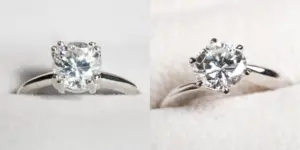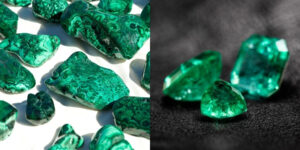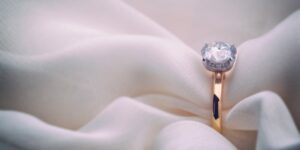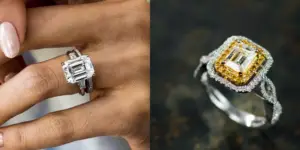Looking for an eternal token of affection ? A way for your loved one to know you will always stand by them ? ‘A diamond is forever’ went the infamous DeBeers ad that put diamond engagement rings front and center. But are diamonds really that indestructible ? It would seem that no, actually, diamonds don’t truly last forever, as far as the universe’s timeline goes.
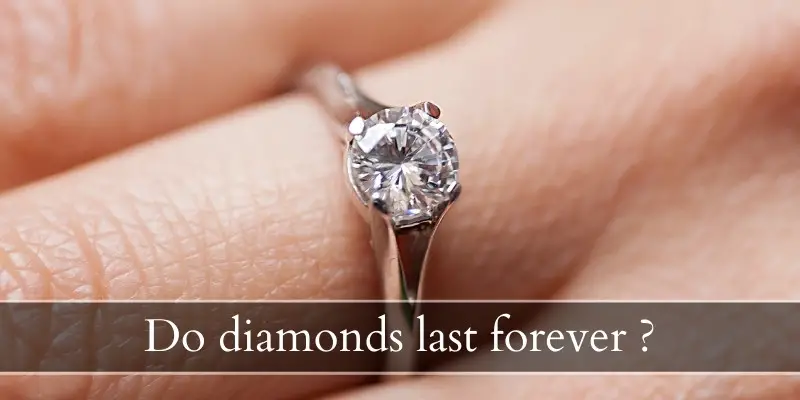
Do diamonds last forever ?
Diamonds do not last forever as they very, very slowly degrade into graphite. Graphite is a more stable and relaxed form of carbon, so all diamonds will eventually end up as mottled or black diamonds and then pure graphite. This happens over the course of several billions of years, due to high pressure combined with high temperatures.
Does this mean you engagement ring will develop spots ? Yes, in a few billion years. You’re very unlikely to witness it though, so for jewelry purposes diamonds are indeed forever. They’re just going to change form in the (very) grand scheme of things, as time progresses and the Sun burns out.
For example drill heads in industrial boring machines, such as those digging large tunnels under the ground, those have a whole slew of diamonds studded onto the boring plates. As the plates rotate and brush against the rock, the diamond heats up. It also goes through immense pressure, from the boring machine pushing and the rock resisting. This speeds up the graphite formation and the diamonds eventually flake off. They need to be replaced every now and then.
So in short yes, diamonds to degrade and flake off over time but you’re very unlikely to see it happening. So for the purposes of jewelry and human use, diamonds are indeed forever.
Read also: Herkimer Diamonds VS Diamond
How long do diamonds last ?
A diamond will last for several billions of years before it turns completely into graphite, or develops enough inclusions to become too brittle. You see, the only difference between a clear diamond and a piece of graphite is the crystal lattice structure and atom bonds. The change from diamond to graphite is not easy, but it can be spontaneous if the right conditions are met.
The diamond needs to be ‘pushed’ into turning to graphite, through HPHT (high pressure high temperature) or heavily ionized so the atoms rearrange themselves into graphite. Most people don’t wear their diamonds in such an environment, so their diamonds won’t be subjected to this.
BUT ! This is the case for treated grey and lack diamonds to get more inclusions into them, especially black diamonds.
Are treated grey and black diamonds stable ?
Treated grey and black diamonds are less stable than a clear diamond, because all the graphite inclusions are a change in the crystal lattice, which will destabilize the diamond over time. We’re talking a considerably large amount of time, again, billions of years under natural circumstances.
So if your jewelry has grey or black diamonds, it’s a bit less stable than a clear diamond but it will not affect the daily wear of your jewelry. The more included the diamond is, the more unstable it becomes but you and your future generations likely won’t notice anything for several centuries.
You may be wondering why diamonds are treated to get grey and black diamonds, don’t they already exist ? Well yes, they do exist, but in a smaller amount, especially the fully black diamonds.
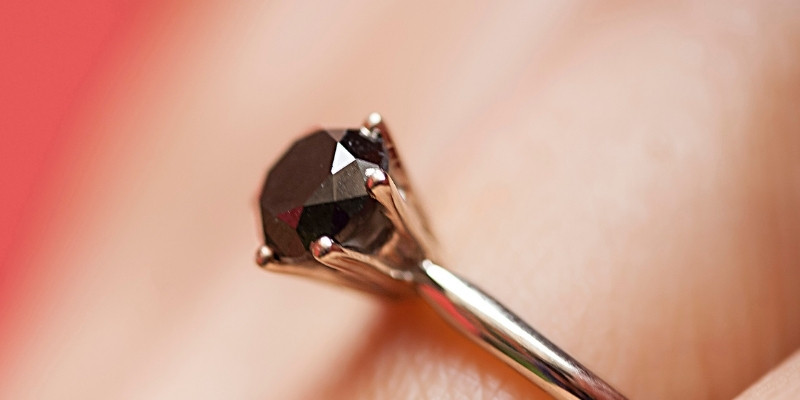
A treated black diamond usually starts out as a heavily included grey or brown diamond, which is then either subjected to HPHT or ion treatment. The result is a diamond with so many graphite inclusions it looks essentially opaque black. In some black diamonds you can even see some inclusions reaching the surface of the facets.
You can safely wear grey and black diamonds, but we recommend getting them in under 1 carat, and possibly under 0.5 carats simply so their are more stable.
Diamonds do have perfect hardness for everyday wear
What about your everyday, run of the mill clear diamonds ? Those are still very good to wear every day and aren’t going to scratch any time soon. Diamonds score a 10/10 on the Mohs scale of hardness, so they are going to be incredibly tough well into their graphite-forming years.
Diamonds don’t scratch but they can shatter
Despite a diamond’s incredible toughness, it can be shattered with the right amount of force applied at the right angle and in the right place. This is very difficult to achieve by mistake and even on purpose, unless you’re a trained lapidary and have the necessary equipment.
Sometimes a diamond rough needs to be split into smaller pieces, with clean lines, and only then polished into its final shape. In these cases the perfect plane (the 111 which is the longest diagonal) is the best place to strike. A properly trained lapidary will be able to find this plane and orient the diamond accordingly.
It turns out that diamonds so, in fact, have a ‘face’ or ‘best side’, and orienting a diamond poorly can result in weak point being exposed as sharp points, which will then split the diamond if it is every hit in just the right way.
Do diamonds lose sparkle over time ?
No, diamonds don’t lose their sparkle, nor do they scratch over time. As they form graphite inclusions and eventually turn into graphite fully, they do lose their sparkle, over several billions of years. But they don’t dull at all with daily wear, and retain their sparkle and shine for a very long time, or rather indefinitely as far as human lifespans are concerned.
So if you’re worried that your great-grandma’s diamond will not be as shiny and sparkly in time, don’t be. Of course, a diamond’s cut is essential to getting the most sparkle out of it. Vintage diamonds most often feature less facets than modern ones, resulting in less sparkle.

A common vintage example is the rose cut, which has a flat bottom and a domed shape with several facets, but not enough to offer much sparkle. It resembles a step cut in that it emphasizes a diamond’s clarity rather than its sparkle.
Other common vintage cuts are the French cut, very similar to a simplified princess cut, the table cut which is like a very simple square cut, and old mine cut which is like a simplified cushion cut.
Any of these cuts can be repurposed into a modern cut that focuses more on brilliance and fire, so your diamond can be updated if you like.

I’m the main author for jewelrymaterialguide.com. I started this site after we did tons of research before our wedding and noticed that there is information about rings, jewelry, and so on that is really hard to find on the internet.


